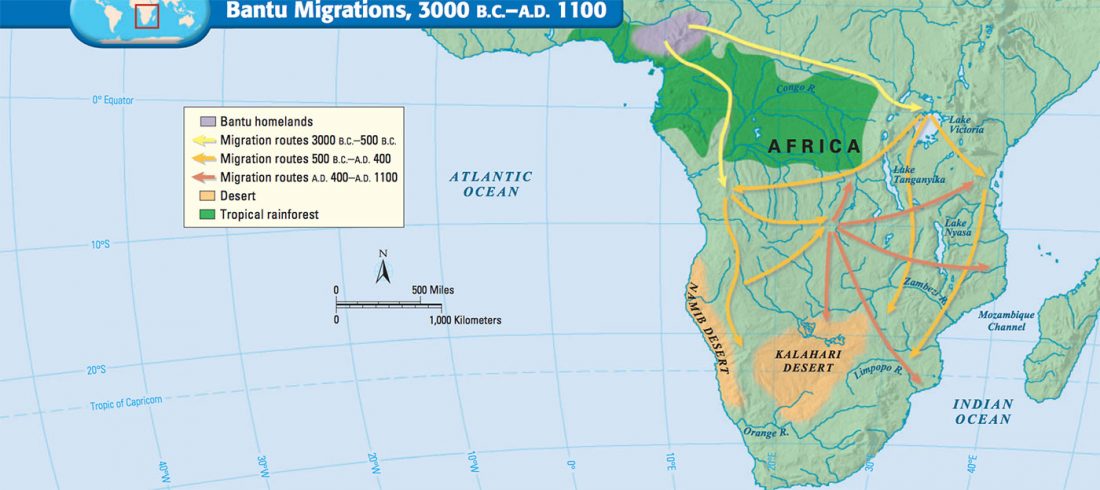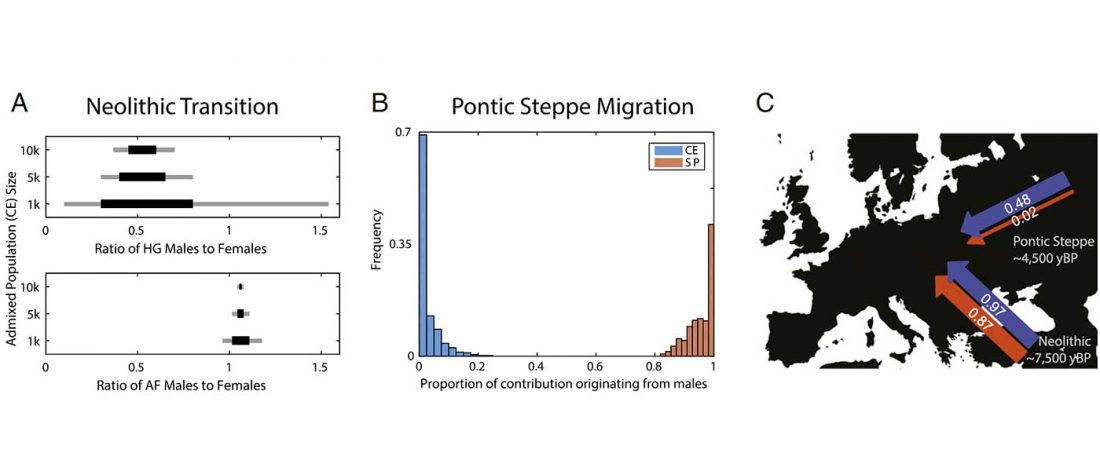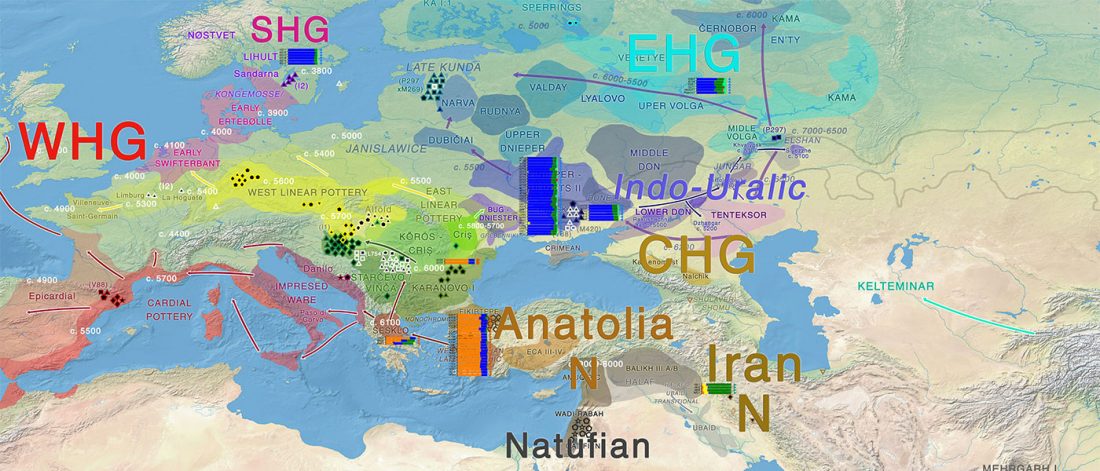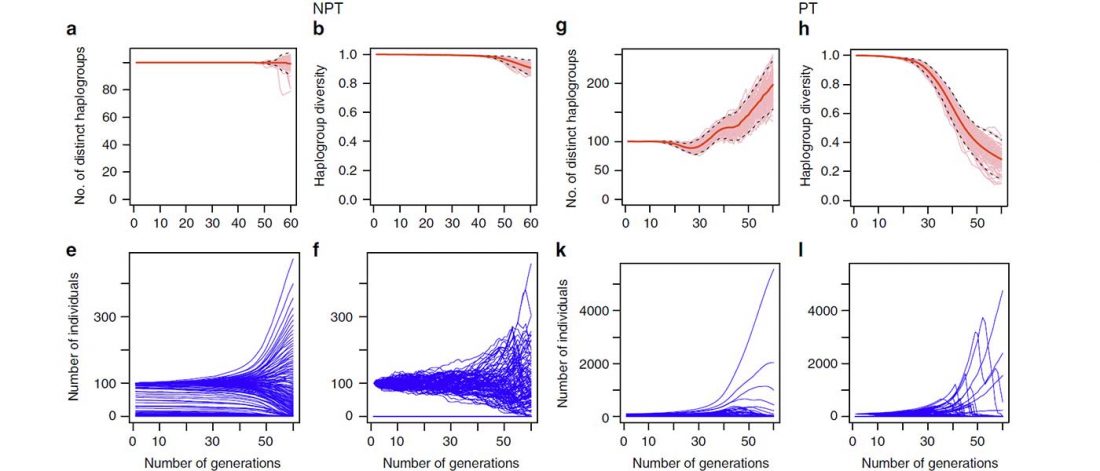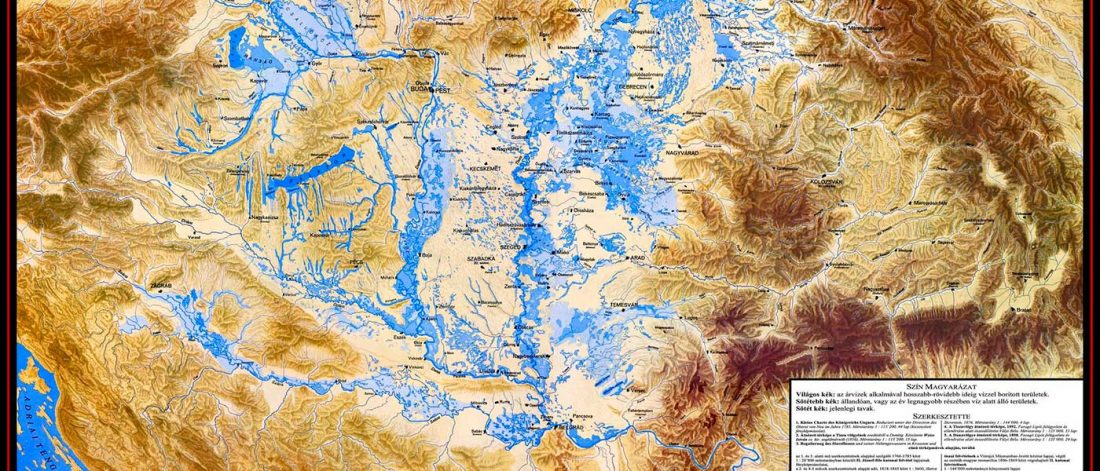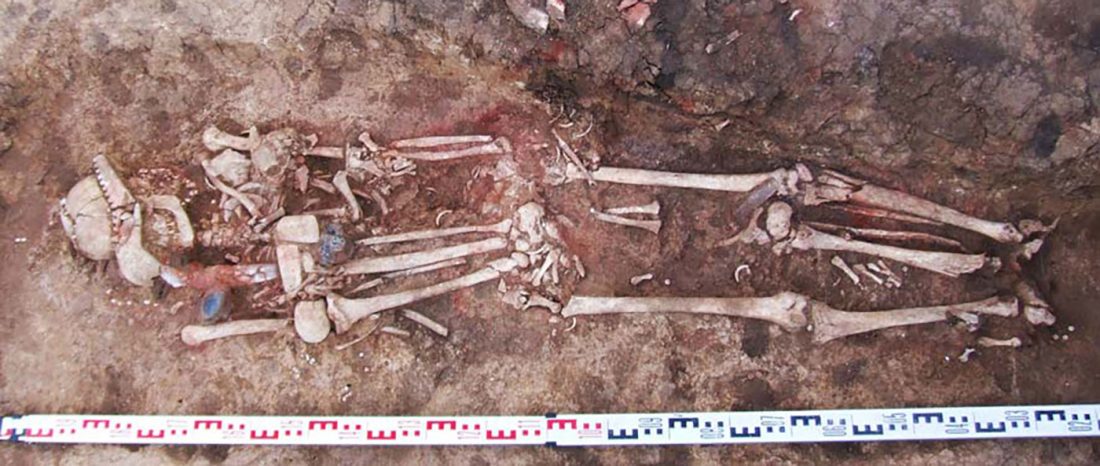The role of matrilineality in shaping patterns of Y chromosome and mtDNA sequence variation in southwestern Angola, by Oliveira et al. bioRxiv (2018).
Interesting excerpts (emphasis mine):
The origins of NRY diversity in SW Angola
In accordance with our previous mtDNA study9, the present NRY analysis reveals a major division between the Kx’a-speaking !Xun and the Bantu-speaking groups, whose paternal genetic ancestry does not display any old remnant lineages, or a clear link to pre-Bantu eastern African migrants introducing Khoe-Kwadi languages and pastoralism into southern Africa (cf. 15). This is especially evident in the distribution of the
…
Read the rest “Bantu distinguished from Khoe by uniparental markers, not genome-wide autosomal admixture”
Two interesting papers questioning previous methods have been published.
Open access Mitochondrial DNA is unsuitable to test for isolation by distance, by Teske et al. Scientific Reports (2018) 8:8448.
Abstract (emphasis mine):
Tests for isolation by distance (IBD) are the most commonly used method of assessing spatial genetic structure. Many studies have exclusively used mitochondrial DNA (mtDNA) sequences to test for IBD, but this marker is often in conflict with multilocus markers. Here, we report a review of the literature on IBD, with the aims of determining (a) whether significant IBD is primarily a result of lumping spatially discrete
…
Read the rest “Mitochondrial DNA unsuitable to test for IBD, and undersampling genomes show biased time and rate estimates”
Some interesting excerpts from Wang et al. (2018):
An interesting observation is that steppe zone individuals directly north of the Caucasus (Eneolithic Samara and Eneolithic steppe) had initially not received any gene flow from Anatolian farmers. Instead, the ancestry profile in Eneolithic steppe individuals shows an even mixture of EHG and CHG ancestry, which argues for an effective cultural and genetic border between the contemporaneous Eneolithic populations in the North Caucasus, notably Steppe and Caucasus. Due to the temporal limitations of our dataset, we currently cannot determine whether this ancestry is stemming from an existing natural genetic
…
Read the rest “Steppe and Caucasus Eneolithic: the new keystones of the EHG-CHG-ANE ancestry in steppe groups”
Open access study Cultural hitchhiking and competition between patrilineal kin groups explain the post-Neolithic Y-chromosome bottleneck, by Zeng, Aw, and Feldman, Nature Communications (2018).
Abstract (emphasis mine):
In human populations, changes in genetic variation are driven not only by genetic processes, but can also arise from cultural or social changes. An abrupt population bottleneck specific to human males has been inferred across several Old World (Africa, Europe, Asia) populations 5000–7000 BP. Here, bringing together anthropological theory, recent population genomic studies and mathematical models, we propose a sociocultural hypothesis, involving the formation of patrilineal kin groups and intergroup competition among
…
Read the rest “Post-Neolithic Y-chromosome bottleneck explained by cultural hitchhiking and competition between patrilineal clans”
Funny reports are popping up due to a recent article in New Scientist (behind paywall), World’s most-spoken languages may have arisen in ancient Iran, which echoes the controversial interpretations of Wang et al. (2018).
I have been waiting to read the printed edition, but that of May 26th doesn’t have the article in it, so it may be a web-only text.
Nevertheless, here are some excerpts about the PIE homeland from a news aggregator that caught my attention (emphasis mine):
The two proposed locations are divided by the Caucasus mountains, which are found between the Black
…
Read the rest “The new Scicomm’s warhorse is “CHG ancestry = PIE” and the Iranian homeland”
This is a series of posts I wrote at the end of 2017 / beginning of 2018, to answer the wrong assumptions I could read in forums and blogs. I decided not to publish them then, seeing how many successive papers were confirming my theory in a (surprisingly) clear-cut way. Nevertheless, because I keep reading the same comments and personal attacks no matter what gets published even in mid-2018, I have decided to update and publish them. This way I will be able to respond to the “haplogroup R1a – Indo-European association” directly by pointing to any of these posts … Read the rest “The history of the simplistic ‘haplogroup R1a — Indo-European’ association”
This is a series of posts I wrote at the end of 2017 / beginning of 2018, to answer the wrong assumptions I could read in forums and blogs. I decided not to publish them then, seeing how many successive papers were confirming my theory in a (surprisingly) clear-cut way. Nevertheless, because I keep reading the same comments and personal attacks no matter what gets published even in mid-2018, I have decided to update and publish them. This way I will be able to respond to the “haplogroup R1a – Indo-European association” directly by pointing to any of these posts … Read the rest “Haplogroup is not language, but R1b-L23 expansion was associated with Proto-Indo-Europeans”
Interesting excerpts about local Hungarian groups that had close contacts with Yamna settlers in the Carpathian Basin, from the paper Immigration and transhumance in the Early Bronze Age Carpathian Basin: the occupants of a kurgan, by Gerling, Bánffy, Dani, Köhler, Kulcsár, Pike, Szeverényi & Heyd, Antiquity (2012) 86(334):1097-1111.
The most interesting of the local people is the occupant of grave 12, which is the earliest grave in the kurgan and the main statistical range of its radiocarbon date clearly predates the arrival of the western Yamnaya groups c. 3000 BC. This is also confirmed by the burial rite,
…
Read the rest “Immigration and transhumance in the Early Bronze Age Carpathian Basin”
Recent paper (behind paywall) The Unique Burial of the Ekaterinovsky Cape Early Eneolithic Cemetery in the Middle Volga Region, by Korolev et al. Stratum Plus (2018) Nº2.
Abstract (official, in English):
This is the first time we published the results of a comprehensive study of burial 45 of the eneolithic cemetery called Ekaterinovsky Cape. The burial contains the skeleton of a young man with traumatic injuries of the skull, leg and hand bones of other individuals, skeleton of a young specimen of a domestic goat (Capra hircus) that was abundantly sprinkled with red ocher. Grave goods include three stone
…
Read the rest “The unique elite Khvalynsk male from a Yekaterinovskiy Cape burial”
